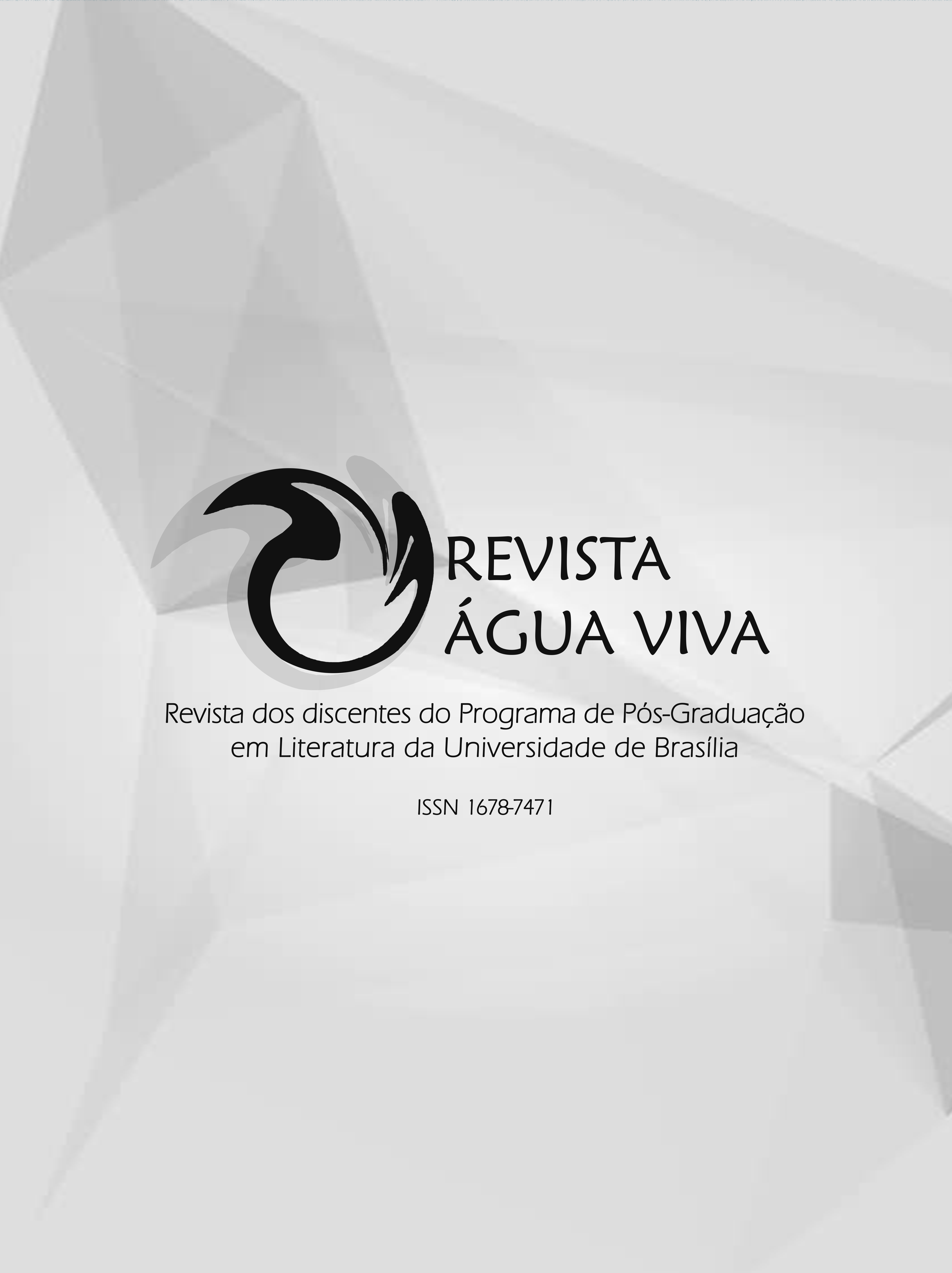MARGINALIA E HIPERTEXTO: O PERSONAGEM COMO CRÍTICO EM S. OU O NAVIO DE TESEU
DOI :
https://doi.org/10.26512/aguaviva.v3i2.23539Mots-clés :
Literatura Eletrônica; Hipertexto; S.Résumé
From the precepts of electronic literature addressed by Katherine Hayles and Janet H. Murray, we aim to understand how a physical literary book, in all its materiality, can be connected to the poetics of the digital world. To do so, we analyzed the work S. also known as The Ship of Theseus, by J. J. Abrams and Doug Dorst. The use of this work is justified on account of its theme regarding the construction of identity, which ends up bringing different relationships with readers of the work. This happens because the investigative act on the identity of the authors and the characters elevates the reader to the level of character-literary critic in the work. Fact allowed only because of the elements of electronic poetics included in the writing method.
Téléchargements
Références
____.; DORST, Doug. S. Tradução de Alexandre Martins. Rio de Janeiro: Intrínseca, 2015.
BEIGUELMAN, Giselle. O livro depois do livro. São Paulo: Peirópolis, 2003.
CARRIÈRE, Jean-Claude; ECO, Umberto. Não contem com o fim do livro. Tradução de André Telles. Rio de Janeiro: Record, 2010.
DELEUZE, Gilles; GUATTARI, Félix. Mil Platôs: capitalismo e esquizofrenia. Tradução: Aurélio Guerra Neto e Célia Pinto Costa. São Paulo: Editora 34, 1995. (Vol I)
HAYLES, N. K. Literatura eletrônica: novos horizontes para o literário. Trad. Luciana Lhullier e Ricardo Moura Buchweitz. 1ª ed. São Paulo: Global: Fundação Universidade de Passo Fundo, 2009.
JAUSS, Hans Robert. A história da literatura como provocação à teoria literária. Tradução: Sérgio Tellaroli. São Paulo: Ática, 1994.
LÉVY, Pierre. Cibercultura. Tradução de Carlos Irineu da Costa. São Paulo: Editora 34, 2000.
MACHADO, Arlindo. Pré-cinemas & pós-cinemas. 6 ed. Campinas, SP: Papirus, 2011.
MAJKUT, Paul. Smallest Mimes: defaced representation and media epistemology. Bucharest: Zeta Books, 2014.
MURRAY, Janet H. Hamlet no holodeck: o futuro da narrativa no ciberespaço. Tradução de Elissa Khour Daher e Marcelo Fernandez Cuzziol. São Paulo: Itaú Cultural: Editora Unesp, 2003.
RYAN, Peter. A Esmeralda do Rio Negro. Tradução de Antonio Selvaggi. Rio de Janeiro: Ediouro, 1994.
Téléchargements
Publié-e
Comment citer
Numéro
Rubrique
Licence
Direitos Autorais para artigos publicados nesta revista são do autor, com direitos de primeira publicação para a revista. Em virtude da aparecerem nesta revista de acesso público, os artigos são de uso gratuito, com atribuições próprias, em aplicações educacionais e não-comerciais.













